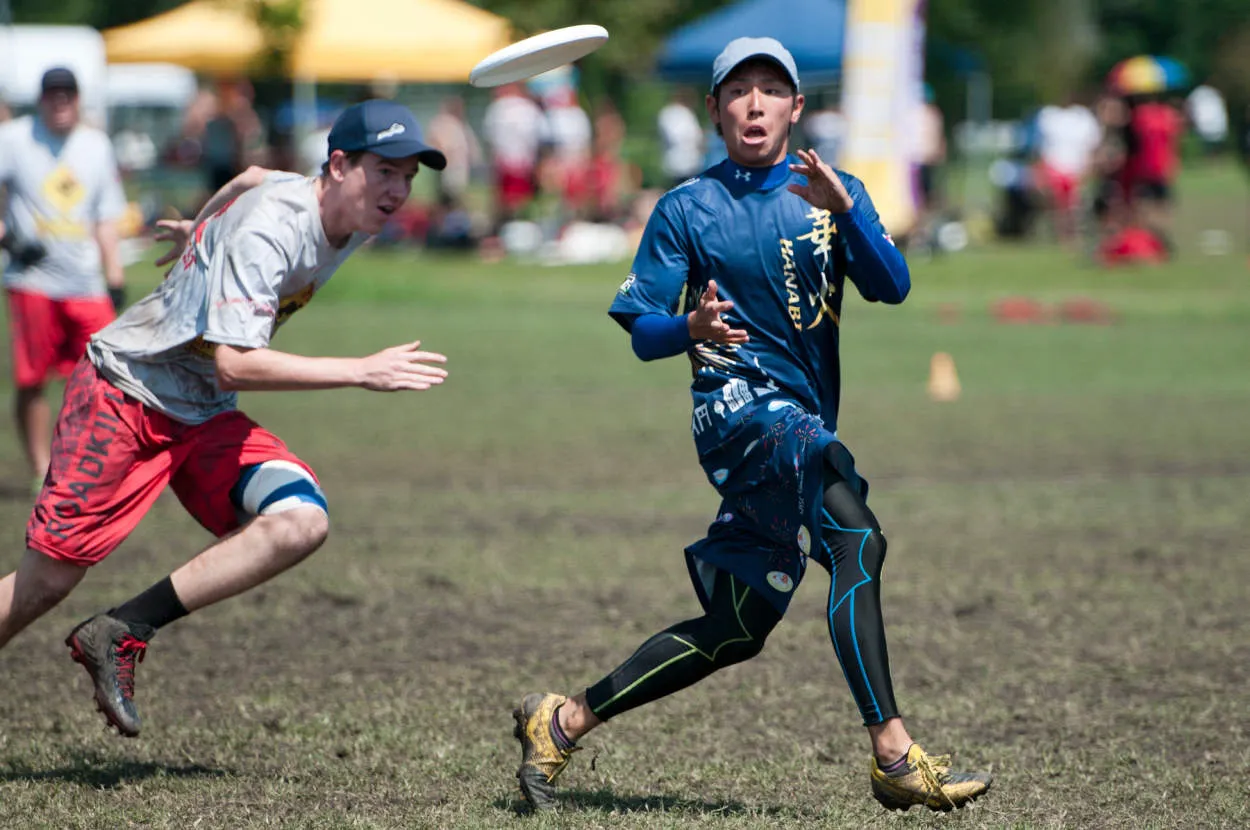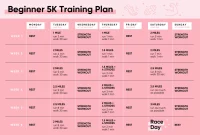Achieving Athletic Excellence: Advanced Training Tips. Discover the secrets to taking your athletic performance to the next level with these advanced training techniques. From optimizing your workouts to improving your recovery, this article will provide you with valuable insights to help you reach new heights in your athletic journey.
Integrating Advanced Techniques in Your Training
In order to achieve athletic excellence, it is crucial to go beyond the basics and incorporate advanced training techniques into your regimen. These techniques can help you push your physical and mental boundaries, and ultimately enhance your performance. Here are some tips on how to integrate advanced techniques into your training:
1. Periodization
Utilize the concept of periodization in your training program. This involves dividing your training into different phases, each with a specific purpose. By systematically adjusting variables such as intensity, volume, and rest periods, periodization optimizes your progress and helps prevent plateaus.
2. Cross Training
Engage in cross-training activities to improve overall athleticism and reduce the risk of overuse injuries. Incorporate different sports or exercises that complement your primary training. This will work different muscle groups, enhance your conditioning, and keep your training routine interesting.
3. High-Intensity Interval Training (HIIT)
Include HIIT workouts in your training plan to improve cardiovascular fitness and burn fat. HIIT involves short bursts of high-intensity exercise followed by brief recovery periods. This type of training boosts endurance, increases metabolism, and can be customized to suit various sports or activities.
4. Plyometrics
Integrate plyometric exercises into your strength training routine. Plyometrics focus on explosive movements to develop power and improve muscular speed and strength. Exercises like box jumps, medicine ball throws, and skipping can enhance your performance in activities requiring quick movements or explosive power.
5. Mental Conditioning
Achieving athletic excellence goes beyond physical training. Work on your mental conditioning through techniques such as visualization, goal setting, and positive self-talk. Training your mind will not only improve your focus and confidence but also help you overcome challenges and perform better under pressure.
By incorporating these advanced techniques into your training, you can take your athletic performance to the next level. Remember to consult with a qualified coach or trainer to ensure these techniques are implemented safely and effectively based on your specific goals and current fitness level.
The Role of Technology in Modern Sports Training
In the world of competitive sports, athletes are constantly seeking ways to enhance their performance and gain a competitive edge. One crucial factor that has revolutionized the way athletes train is technology. With the advent of advanced technology, sports training has become more efficient, precise, and personalized.
1. Performance Tracking Systems
Modern sports training heavily relies on performance tracking systems. Through wearable devices and sensors, athletes can now gather real-time data on various aspects of their performance, such as heart rate, speed, distance covered, and even body mechanics. This data enables coaches and trainers to make data-driven decisions and provide tailored training programs to maximize an athlete’s potential.
2. Virtual Reality (VR)
Virtual Reality (VR) has transformed the way athletes visualize and practice their sport. VR technology allows athletes to experience simulated game situations, enhancing their decision-making skills, reaction time, and spatial awareness. By immersing themselves in realistic training scenarios, athletes can train in a safe environment while replicating the intensity of actual competition.
3. Video Analysis
Video analysis has long been utilized in sports training, but advancements in technology have taken it to a whole new level. High-speed cameras, slow-motion replays, and analytical software enable coaches to closely study an athlete’s technique, identify areas for improvement, and provide targeted feedback. Video analysis also allows athletes to compare their performance with that of top athletes, inspiring them to push their limits.
4. Biomechanical Analysis
Biomechanical analysis involves the study of an athlete’s movements and body mechanics. Through motion capture technology and force plates, trainers can analyze an athlete’s technique with incredible precision. By understanding the biomechanics of optimal performance, trainers can make necessary adjustments to an athlete’s form, reducing the risk of injury and enhancing performance.
5. Recovery and Injury Prevention
Technology plays a crucial role in athlete recovery and injury prevention. Innovative devices such as cryotherapy chambers, compression boots, and smart insoles accelerate the recovery process, reduce inflammation, and detect early signs of overexertion. Additionally, wearable sensors can track an athlete’s workload, providing valuable insights to prevent overtraining and minimize the risk of injuries.
These are just a few examples of how technology has revolutionized sports training. As technology continues to advance, athletes are constantly finding new ways to leverage its benefits and optimize their performance. With cutting-edge tools and techniques at their disposal, athletes can strive for excellence and outperform their competitors.
Balancing Individual and Team Training
When it comes to achieving athletic excellence, finding the right balance between individual and team training is crucial. Both forms of training have their own benefits and play a significant role in an athlete’s development.
Individual training focuses on personal skill development and allows athletes to work on specific areas that need improvement. This type of training provides an opportunity for athletes to hone their technique, build strength, and improve their overall performance. It is a time for athletes to push themselves and set personal goals.
On the other hand, team training is essential for fostering collaboration, communication, and teamwork among athletes. It allows them to develop strategies, learn to trust and rely on one another, and understand their roles within the team. Team training enhances athletes’ ability to work together towards a common goal, crucial for success in sports.
While both types of training are valuable, finding the right balance is essential. Too much emphasis on individual training may lead to athletes becoming too focused on personal goals at the expense of team dynamics. Conversely, excessive team training without individual focus can hinder personal growth and improvement.
Coaches and athletes must strike a balance by incorporating a combination of individual and team training sessions. This allows athletes to work on their individual skills while also fostering teamwork and unity within the team. It is important to tailor training programs to meet the specific needs of the athletes and the sport.
By striking the right balance between individual and team training, athletes can maximize their potential and achieve athletic excellence. The combination of personal development and team collaboration will not only lead to improved performance but also create a supportive and successful team environment.
Mental Toughness and Sports Success
In the pursuit of athletic excellence, advanced training tips can play a significant role. However, one often overlooked aspect that can greatly impact sports success is mental toughness. The ability to stay focused, handle pressure, and maintain a positive mindset can make a world of difference in an athlete’s performance.
Mental toughness is not an innate trait, but rather a skill that can be developed and honed with practice. Here are some strategies to enhance mental toughness and optimize sports performance:
- Set Clear Goals: Clearly define what you want to achieve in your sport. Setting specific, measurable, attainable, relevant, and time-bound (SMART) goals can provide clarity and motivation.
- Develop Resilience: Sports involve setbacks and failures. It’s crucial to learn from these experiences and bounce back stronger. Embrace challenges, stay persistent, and maintain a positive mindset.
- Cultivate Focus: In today’s fast-paced world, maintaining focus is a challenge. Practice concentration exercises, eliminate distractions, and develop a pre-game routine to get in the zone and stay focused during competitions.
- Control Your Thoughts: Negative thoughts can hinder performance. Practice thought-stopping techniques and replace negative self-talk with positive affirmations. Visualization exercises can also help you mentally prepare for success.
- Manage Pressure: Sports often involve high-pressure situations. Learn techniques such as deep breathing, progressive muscle relaxation, and mindfulness to manage stress and perform at your best when it matters most.
Remember, mental toughness is an ongoing process that requires consistent effort and practice. By incorporating these strategies into your training routine, you can enhance your mental game and increase your chances of achieving athletic excellence.
Recovery Techniques for Athletes
Achieving athletic excellence requires a well-rounded approach, not just through intense training but also by prioritizing recovery. Here are some advanced recovery techniques that can help athletes optimize their performance:
1. Active Recovery
Engaging in low-intensity exercises such as light jogging, swimming, or cycling can stimulate blood flow and promote faster recovery after strenuous workouts. Active recovery helps flush out metabolic waste products and reduces muscle soreness.
2. Contrast Water Therapy
Alternating between hot and cold water immersion can enhance circulation, decrease inflammation, and alleviate muscle damage. This therapy can be performed by taking turns soaking in hot and cold water or using ice packs and warm compresses on specific body areas.
3. Massage and Foam Rolling
Regular massage sessions and using foam rollers can help improve muscle flexibility, increase blood flow, and reduce muscle tension. These techniques can target specific areas of discomfort or be used for overall relaxation.
4. Proper Nutrition
A well-balanced diet rich in lean proteins, complex carbohydrates, and healthy fats is crucial for optimal recovery. Consuming sufficient nutrients not only aids in muscle repair but also replenishes glycogen stores and supports overall energy levels.
5. Sleep and Rest
Sleep is vital for athletes as it allows the body to repair and regenerate. Aim for 7-9 hours of quality sleep each night to optimize hormone production, cognitive function, and muscle recovery. Additionally, incorporating regular rest days into training schedules is important to prevent overtraining and reduce the risk of injury.
6. Cryotherapy
Using cold therapy, such as ice baths or cryotherapy chambers, can assist in reducing inflammation, muscle soreness, and overall recovery time. It constricts blood vessels and numbs nerve endings, which may help to minimize pain and swelling.
7. Psychological Recovery
Recovery is not solely physical; it also involves mental well-being. Engaging in relaxation techniques, meditation, visualization exercises, and seeking support from sports psychologists can help athletes manage stress, enhance focus, and maintain a healthy mindset.
Remember, recovery is an integral part of athletic training. Incorporating these advanced techniques can aid athletes in maximizing their potential, reducing the risk of injuries, and achieving long-term athletic excellence.
Conclusion
In conclusion, achieving athletic excellence requires a combination of advanced training techniques and dedication. By focusing on specific areas such as strength training, conditioning, and mental preparation, athletes can enhance their performance and reach their full potential. Additionally, proper nutrition and rest are crucial for optimal recovery. Remember, success in sports is a journey that requires perseverance and a commitment to continuous improvement.




